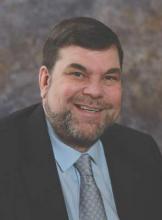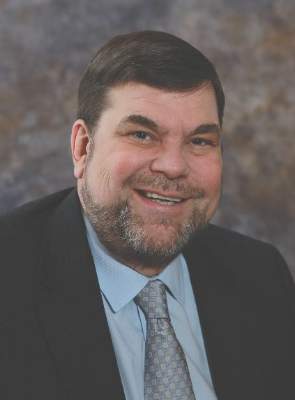User login
The reporter wanted to nail me, and shot me the zinger, “Doctor why do you get paid $106 to do a skin biopsy, and they only get $30 in Germany”?
I paused for minute (she was sure she had me), and then I said, “They only get $30? That stinks. You know I do get $49.”
The reporter said, “No, no, I see here in the Medicare database that doctors in the United States get paid $106.”
I explained to her that $57 of that was for equipment, staff, and supplies, and that doctors in Germany do everything in the hospital setting, where they don’t have to pay for any of that.
Oh.
This is an error that is repeated again and again, and you need to know the reason you get paid “so much.” The second year’s worth of the Medicare data were released last month, with a wrinkle: They removed the cost of medications. They floated the surgeons, oncologists, and ophthalmologists down and floated dermatology up to near the top, just under radiation oncology.
Let’s think about this for a minute. How many radiation oncologists have linear accelerators in their offices, and how many cardiologists have cath labs? How many ophthalmologists do cataract procedures in the office? The same is true for almost every other specialty. Most practitioners of procedural medicine do procedures in a hospital, where they pay no practice expenses. They may have a small office for consultations and suture removals, but for anything else they say, “Meet me at the hospital.” Often, the hospital supplies the office space for free or at a discount.
Now I don’t envy the primary care doctors, who also do everything in their offices, but guess what? Practice expense is only about 20% of the valuation of the evaluation and management codes. Think about this again. They don’t have power tables, OR lights, prep kits, sutures, hand tools, gauze, sponges, bandages, etc., to pay for, so it makes sense.
This means that most procedural physicians keep (before the huge tax bill we all are subject to) almost every Medicare dollar or insurance dollar they receive. Dermatologists’ reimbursements are 60% for practice expenses overall, with some even higher. Mohs surgery, for example, costs an average of 66% to provide. Dermatologists do almost nothing in the hospital, and instead provide more care for patients in the office setting. So, when the reporter tries to zing you about collecting $300,000 from Medicare, you explain that your dollars aren’t the same as everyone else’s dollars, and you really took $120,000 to the tax man (not that any of this is really their business anyway).
And, by the way, tell them you only get $24 for a second biopsy, which is just as much work as the first.
I think we should ask CMS to pull the practice expense out of its Medicare numbers in the next report. A dollar spent for surgical supplies is the same as a dollar spent for medications. It’s all money the doctor never sees.
Dr. Coldiron is a past president of the American Academy of Dermatology. He is currently in private practice, but maintains a clinical assistant professorship at the University of Cincinnati. He cares for patients, teaches medical students and residents, and has several active clinical research projects. Dr. Coldiron is the author of more than 80 scientific letters, papers, and several book chapters, and he speaks frequently on a variety of topics.
The reporter wanted to nail me, and shot me the zinger, “Doctor why do you get paid $106 to do a skin biopsy, and they only get $30 in Germany”?
I paused for minute (she was sure she had me), and then I said, “They only get $30? That stinks. You know I do get $49.”
The reporter said, “No, no, I see here in the Medicare database that doctors in the United States get paid $106.”
I explained to her that $57 of that was for equipment, staff, and supplies, and that doctors in Germany do everything in the hospital setting, where they don’t have to pay for any of that.
Oh.
This is an error that is repeated again and again, and you need to know the reason you get paid “so much.” The second year’s worth of the Medicare data were released last month, with a wrinkle: They removed the cost of medications. They floated the surgeons, oncologists, and ophthalmologists down and floated dermatology up to near the top, just under radiation oncology.
Let’s think about this for a minute. How many radiation oncologists have linear accelerators in their offices, and how many cardiologists have cath labs? How many ophthalmologists do cataract procedures in the office? The same is true for almost every other specialty. Most practitioners of procedural medicine do procedures in a hospital, where they pay no practice expenses. They may have a small office for consultations and suture removals, but for anything else they say, “Meet me at the hospital.” Often, the hospital supplies the office space for free or at a discount.
Now I don’t envy the primary care doctors, who also do everything in their offices, but guess what? Practice expense is only about 20% of the valuation of the evaluation and management codes. Think about this again. They don’t have power tables, OR lights, prep kits, sutures, hand tools, gauze, sponges, bandages, etc., to pay for, so it makes sense.
This means that most procedural physicians keep (before the huge tax bill we all are subject to) almost every Medicare dollar or insurance dollar they receive. Dermatologists’ reimbursements are 60% for practice expenses overall, with some even higher. Mohs surgery, for example, costs an average of 66% to provide. Dermatologists do almost nothing in the hospital, and instead provide more care for patients in the office setting. So, when the reporter tries to zing you about collecting $300,000 from Medicare, you explain that your dollars aren’t the same as everyone else’s dollars, and you really took $120,000 to the tax man (not that any of this is really their business anyway).
And, by the way, tell them you only get $24 for a second biopsy, which is just as much work as the first.
I think we should ask CMS to pull the practice expense out of its Medicare numbers in the next report. A dollar spent for surgical supplies is the same as a dollar spent for medications. It’s all money the doctor never sees.
Dr. Coldiron is a past president of the American Academy of Dermatology. He is currently in private practice, but maintains a clinical assistant professorship at the University of Cincinnati. He cares for patients, teaches medical students and residents, and has several active clinical research projects. Dr. Coldiron is the author of more than 80 scientific letters, papers, and several book chapters, and he speaks frequently on a variety of topics.
The reporter wanted to nail me, and shot me the zinger, “Doctor why do you get paid $106 to do a skin biopsy, and they only get $30 in Germany”?
I paused for minute (she was sure she had me), and then I said, “They only get $30? That stinks. You know I do get $49.”
The reporter said, “No, no, I see here in the Medicare database that doctors in the United States get paid $106.”
I explained to her that $57 of that was for equipment, staff, and supplies, and that doctors in Germany do everything in the hospital setting, where they don’t have to pay for any of that.
Oh.
This is an error that is repeated again and again, and you need to know the reason you get paid “so much.” The second year’s worth of the Medicare data were released last month, with a wrinkle: They removed the cost of medications. They floated the surgeons, oncologists, and ophthalmologists down and floated dermatology up to near the top, just under radiation oncology.
Let’s think about this for a minute. How many radiation oncologists have linear accelerators in their offices, and how many cardiologists have cath labs? How many ophthalmologists do cataract procedures in the office? The same is true for almost every other specialty. Most practitioners of procedural medicine do procedures in a hospital, where they pay no practice expenses. They may have a small office for consultations and suture removals, but for anything else they say, “Meet me at the hospital.” Often, the hospital supplies the office space for free or at a discount.
Now I don’t envy the primary care doctors, who also do everything in their offices, but guess what? Practice expense is only about 20% of the valuation of the evaluation and management codes. Think about this again. They don’t have power tables, OR lights, prep kits, sutures, hand tools, gauze, sponges, bandages, etc., to pay for, so it makes sense.
This means that most procedural physicians keep (before the huge tax bill we all are subject to) almost every Medicare dollar or insurance dollar they receive. Dermatologists’ reimbursements are 60% for practice expenses overall, with some even higher. Mohs surgery, for example, costs an average of 66% to provide. Dermatologists do almost nothing in the hospital, and instead provide more care for patients in the office setting. So, when the reporter tries to zing you about collecting $300,000 from Medicare, you explain that your dollars aren’t the same as everyone else’s dollars, and you really took $120,000 to the tax man (not that any of this is really their business anyway).
And, by the way, tell them you only get $24 for a second biopsy, which is just as much work as the first.
I think we should ask CMS to pull the practice expense out of its Medicare numbers in the next report. A dollar spent for surgical supplies is the same as a dollar spent for medications. It’s all money the doctor never sees.
Dr. Coldiron is a past president of the American Academy of Dermatology. He is currently in private practice, but maintains a clinical assistant professorship at the University of Cincinnati. He cares for patients, teaches medical students and residents, and has several active clinical research projects. Dr. Coldiron is the author of more than 80 scientific letters, papers, and several book chapters, and he speaks frequently on a variety of topics.

